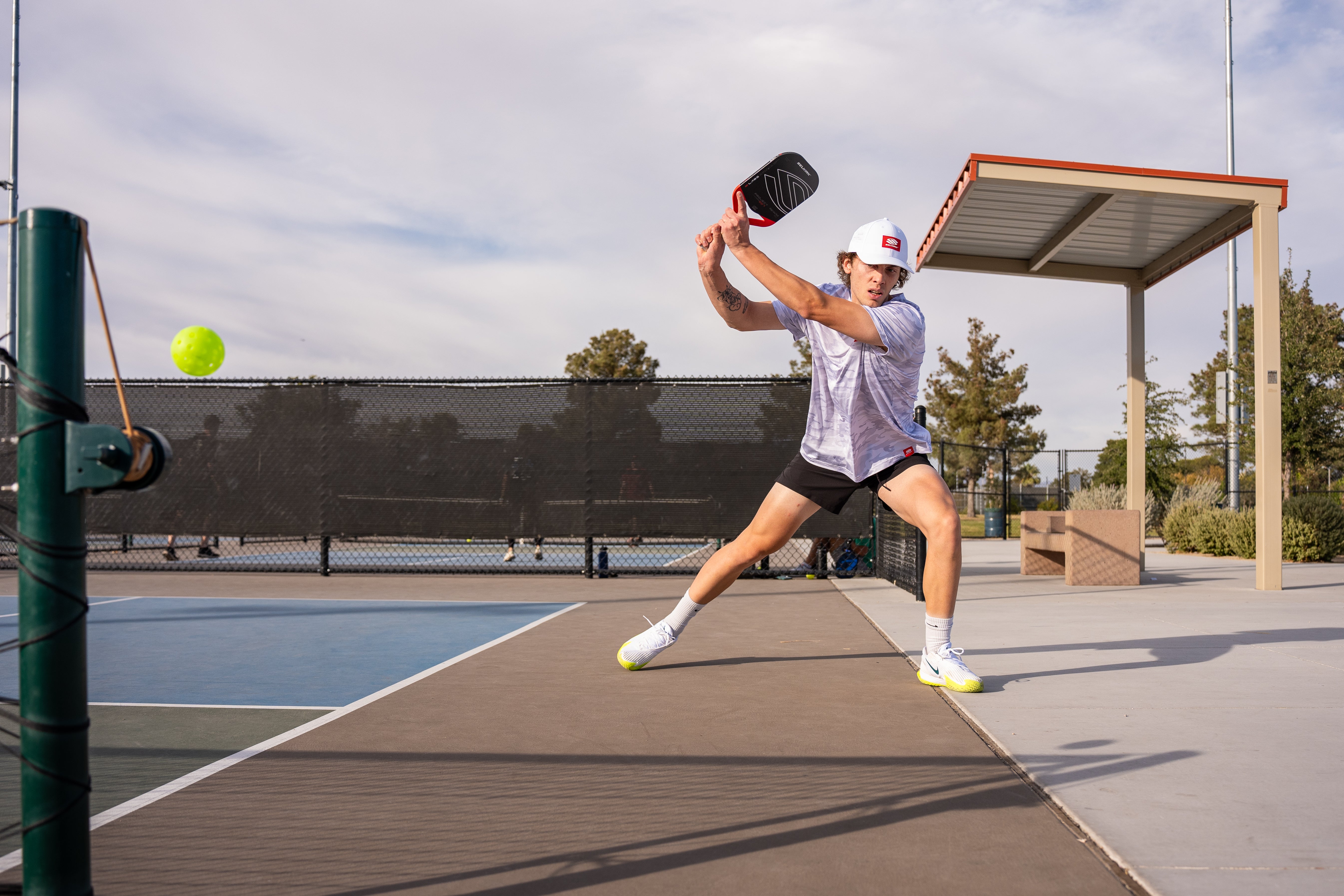If you're a running enthusiast, you’ve likely heard the name Roger Bannister. In 1954, at the tender age of 25, Bannister became the first man to break the 4-minute mile — a feat that had previously been perceived as impossible. For the record, I am not a runner. I bought a car for that very reason. I do, however, admire runners immensely, and anyone who sets any kind of record certainly has my respect.
In pickleball, hitting a ball Around-the-Post (ATP) or executing an Erne is every new player's version of the 4-minute mile. I say that because, much like Bannister's historic run, once one player proves it's possible, many others follow. After Bannister broke the barrier, more than 300 others did the same within the following decade. It was a psychological block more than a physical one — and once the illusion of impossibility was shattered, the floodgates opened.
The same holds true for these two iconic shots, especially because pickleball is so often compared to tennis. Do you ever see players hit an ATP in tennis? It’s extremely rare! On our little court, however, with the right angle and speed, it's far from impossible — once you've broken that psychological barrier.
The ATP
At just 20 feet wide, the pickleball court doesn't intimidate many players who come from a serious tennis background — until they’re caught heading in the wrong direction while an opponent flicks a delicate volley just behind them. In those moments, even the most athletic amongst us can look a little silly.
Luckily, the threat of the ATP can effectively cut down the court’s width, but only once you prove to your opponent that you own that shot. Until then, they have no reason to fear it. Many players struggle with controlling dink speed and instinctively aim toward the sidelines, thinking it's the best way to challenge footwork, force an error, or open the middle. These ideas are valid, but there's a fine line between "far enough" and "too far."
Let’s talk about "too far." Against new players, this usually just means hitting out. But against experienced players who can hit an ATP, even a ball that lands close to the line can be too far — especially if it's coming from a sharply crosscourt angle.
I often refer to this as the “full-circle shot” — one that’s so good, it becomes bad. A ball hit with just the right angle and speed can unexpectedly open the door for your opponent to pull off a clean ATP — one of the most difficult and thrilling shots in pickleball. Of course, this full-circle danger only applies if your opponent has proven they can hit the shot. If not, then “too far” simply means out, and you can explore the full width of the court without consequence.
Simple ATP drill
- Have your partner stand on the right side of the court, inside the kitchen.
- Position yourself crosscourt, near your sideline.
- Ask your partner to gently toss balls wide toward your sideline, giving you a chance to practice hitting around the post.
The key to the ATP is patience. Let the ball travel far enough to open up the necessary angle — don’t rush the shot. Keep in mind, the ball won’t move perfectly parallel to the kitchen line, so be prepared to move diagonally, not just laterally, as you set up for the ATP.
The Erne
While the ATP limits court width when the ball comes from a sharp angle — typically off a crosscourt dink — it doesn't help much when you're targeting a player directly in front of you. That’s where one of the most visually impressive shots in the game comes into play: the Erne.
The Erne is remarkably difficult to defend, but it also instills a unique level of fear in your opponent. In my day, one of the players I feared most was Tyler Loong, and this shot was the reason. Tyler has a unique physical attribute that gives him an edge: ape index. That’s a fancy term for your wingspan relative to your height. Tyler is 72 inches tall, but his wingspan is 76 inches — giving him a +4 ape index. That allows him to move like a 6-foot player but reach like someone 6-foot-4. It’s the best of both worlds, and one of the many reasons he’s been able to maintain a world-class level for so long.
I, on the other hand, am 69 inches tall with a 69-inch wingspan. Don’t cry for me — I’ve made peace with it. If anything, it helps with coordination (I can juggle nine tennis balls), but my odds of landing an Erne are roughly the same as getting my taxes in on time: slim to none.
Despite my Erne limitations, I understand something crucial: the threat of the Erne is sometimes more powerful than the shot itself. You don’t need to be acrobatic or sprint through the kitchen. What matters is timing. If you can move early and plant both feet outside the sideline before volleying, you’ve got a shot. And if your opponent doesn’t notice the move in time — shazam! — you’re suddenly the most dangerous player on the court.
That moment of surprise can force last-minute changes in direction or enough hesitation to cause an error. Either way, you win the point or win the mind game.
Simple Erne drill
- With a partner lined up directly in front of you, start by playing a dink toward the middle of the court.
- With space now open toward the sideline, try placing your next dink within 6 to 12 inches of that line, using a more aggressive angle.
- As your partner is forced to turn their body to retrieve the ball, move swiftly — either over or through the kitchen — and be sure to plant both feet outside the sideline before playing the volley.
For added difficulty and greater effectiveness, try hitting that second dink as a volley to steal a bit more time from your opponent.
The new court
If you’ve introduced your opponents to both your ATP and Erne capabilities, you’ve effectively redesigned the court. They’re now forced to avoid the sidelines, shrinking the effective width they can use. That means you and your partner cover less ground — despite playing on the same 20-foot-wide court our pickleball ancestors intended.
One of our biggest jobs on court is limiting our opponent's options. That’s the great paradox: by being athletic enough to hit the ATP or the Erne, you actually reduce the athleticism required to win. Maybe you’re thinking you’re not mobile enough to pull off either shot. If so, remember two things:
- You don’t need to move fast — you just need to move early.
- Athleticism is relative. If your opponents can’t avoid these danger zones, then you absolutely can incorporate these shots.
At the end of the day, fortune favors the brave. If you’ve got the time and desire to drill, then you can build the confidence to go for it when the score reads “0-0-2.”
Until next time, folks — stay out of the kitchen
- Morgan Evans





























































